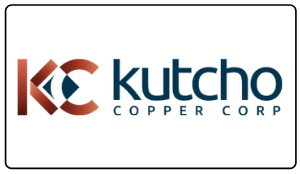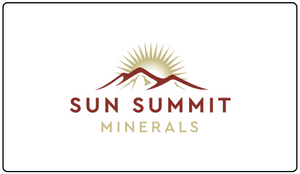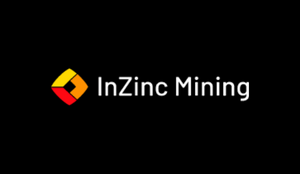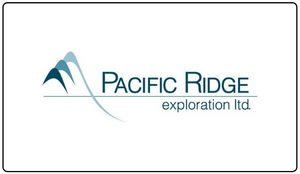| Vancouver, B.C., Feb 14, 2023. Kutcho Copper Corp. (TSXV: KC) (OTC: KCCFF) (“Kutcho Copper” or the “Company”) is pleased to provide results from a Greenhouse Gas (“GHG”) intensity study completed by Environmental Resource Management (ERM) based on the Company’s 2021 Feasibility Study on its high-grade copper – zinc development project located in north-western British Columbia. |
| Vince Sorace, President & CEO of Kutcho Copper stated: “We are proud to have been able to deliver a Feasibility design for the Kutcho Project that has resulted in a low GHG intensity of 1.3 kg CO₂e/kg Cueq inclusive of all construction and closure requirements. Based on public reports, other comparative carbon intensity reporting measures place Kutcho below the median of BC operating mines despite many of those mines have the added benefit of hydroelectricity sourced grid power as compared to Kutcho’s reliance on site LNG generator sourced power.” |
| Kutcho Carbon Intensity The simplest measure for carbon intensity requires estimating the average annual production of GHG emissions from the burning of hydrocarbons such as LNG, diesel, and explosives and dividing that by the produced copper metal (cradle to gate calculation). On this basis the carbon intensity for the Kutcho Project has an average operational annual GHG of 1.94 kg CO2e/kg Cu. Figure 1 shows publicly available information for operating mines in British Columbia in 2018 in comparison to the Kutcho Project. The Kutcho Project average operational annual GHG lies below the median of these other operating mines. The average operational annual GHG per unit of copper does not give the full picture of carbon intensity. The Kutcho Project also produces significant amounts of zinc, silver and gold and, as such, a GHG intensity measured against copper equivalent production is more appropriate. The average operational annual GHG per pound of copper equivalent metal produced is 1.1 kg CO2e/kg Cueq. BC based comparative information is not available for this equivalent metal measure. Further, the average operational annual GHG does not measure the construction and closure periods, which also produce GHGs. A more complete carbon intensity calculation for the Kutcho Project was estimated for the entire project lifecycle commencing with construction, through operation and to end of closure; what is often referred to as the “total annualized life cycle GHG”. The total annualized life cycle GHG for the Kutcho Project was estimated as 1.3 kg CO2e/kg Cueq (2.2 kg CO2e/kg Cu). The Kutcho Project lifecycle GHG intensity compares favourably to other copper operations globally (Figure 2). The low GHG intensity of the Kutcho Project is favoured by design efforts that focussed on minimizing footprint area and materials movement whilst maximizing mining efficiency and mineral recovery. The Projects high grade is a natural advantage. The Kutcho Project’s low GHG intensity is achieved despite the requirement to use LNG power generation. Many other projects in British Columbia have access to zero emissions hydroelectric grid power. |
 Figure 1. Figure 1. |
| -Source for comparison data: https://www2.gov.bc.ca/gov/content/environment/climate-change/data/industrial-facility-ghg. -Comparison data (dark blue) is for 2018 and is most appropriately compared to the green bar for Kutcho. |
 Figure 2. Figure 2. |
| -Comparison data based on a presentation by Associate Professor Gavin M. Mudd from RMIT University in Melbourne, Australia at the UBA Raw Materials and Environment Conference in 2019. – The data provided by Mudd does not specify how multi-metal mines are calculated nor if the full life cycle is included. -Kutcho Copper Life Cycle GHG Intensity includes access road construction, mine construction, operations, and closure with pit backfilling and is based on a cradle-to-gate calculation. -Kutcho Copper is a multi-metal mine (copper, zinc, silver, and gold), so a copper equivalency is also shown based on metal value. Copper-equivalent grades at Main are calculated based on the formula: Cueq = (Cu% x 876) + (Zn% x 0.241) + (Au g/t x 0.441) + (Ag g/t x 0.006). Copper-equivalent grades at Esso are calculated based on the formula: Cueq = (Cu% x 0.945) + (Zn% x 0.310)+(Ag g/t x 0.006)+(Au g/t x 0.466). |
| Opportunities for Further GHG Reductions Kutcho has identified several opportunities that are being investigated to further reduce the GHG intensity of the project including: The potential to build a powerline to the project and connect hydroelectric or geothermal sourced grid power. The potential electrification of the underground mining fleet in order to reduce ventilation power, ventilation capital and air heating requirements and costs. The potential to develop CO2 sequestration technology to permanently store CO2 using chemical reactions that are inherent to tholeiitic basalt. Some 16 million tonnes of such basalt is proposed to be mined in the open pit during the mine life and there may be a means to utilize this material as for carbon capture. Kutcho Copper Corp management will continue to monitor this and other industry research and assess its applicability to the Kutcho Project. Qualified Persons The technical or scientific information in this press release has been reviewed and approved by Andrew Sharp, P.Eng BC (Lic. No. 47907), FAusIMM, Chief Operating Officer for Kutcho Copper, who serves as a qualified person under the definition of National Instrument 43-101. About Kutcho Copper Corp Kutcho Copper Corp is a Canadian resource development company focused on expanding and developing the Kutcho high grade copper-zinc project in northern British Columbia. Committed to social responsibility and the highest environmental standards, the Company recently completed a feasibility study on the Kutcho project and is advancing permitting with the objective of getting to a positive construction decision. |












